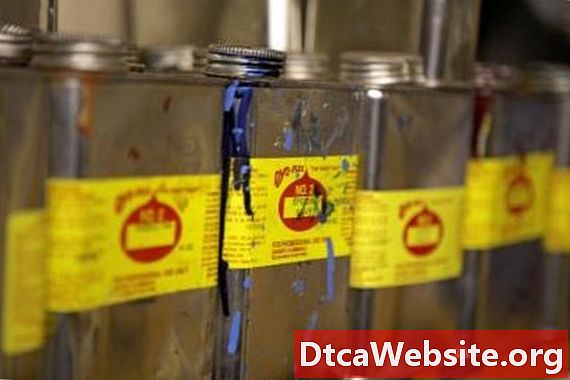
Contenu

Methane gas is a chemical compound, the simplest alkaline, and the biggest component of natural gas. Burning methane gas with oxygen produces large amounts of carbon dioxide and water. Since methane is a gas at normal temperature and pressure, it is extremely hard to transport from its source to a new location. It is usually transported by bulk in its gas form by pipeline. Methane has a high global warming potential and is a major factor in the weakening of the ozone layer. Compressing this natural gas professionally allows for its use as vehicle fuel, which is considered more environmentally friendly than some other types of fuels.
Step 1
Lower the temperature of the tank to a very cold state in order for the methane gas to compress. In this state, with a temperature approaching near absolute zero, the methane gas would turn into liquid methane. Methane is considered to be non-compressible in gas form because when it is compressed, it reverts to liquid form, which is why oil refineries burn off their excess methane gas due to storage issues.
Step 2
Assemble your compressor so that it is ready for use. You will need to connect your purchased fitting, pipeline and valves to your tank.
Step 3
Connect the compressor to the tank filled with the methane gas. The methane gas container also needs to be connected to the liquid nitrogen tank with the pipeline. Turn the release on the container with the methane to the liquid nitrogen cryogenic tank. Close the valve once all the methane has entered the liquid nitrogen tank.
Step 4
Cool the methane gas in the nitrogen tank for at least two days. Turn on the compressor and let it compress the gas. The gas needs to be compressed to approximately 200 psi (pounds per square inch) if about 4 gallons in quantity.
A certain amount of pressure, around 46 bars, is recommended for the methane gas. Bars is a unit of measurement that is roughly equivalent to the atmospheric pressure on Earth at sea level. The methane will slowly compress and form at the bottom of the tank.
Tip
- Seek professional help and advice before trying this at home. Do extensive research on this topic before you start the compression process.
Warning
- It is not recommended that you compress your own methane gas as it can be extremely dangerous. You will need to do extensive research on the topic if you plan to compress methane gas. This process of compression is very expensive to do and to maintain. Setting up this kind of system will also require you to obtain permits from environmental agencies that will allow you to contain this methane gas for home use or distribution, if at all. Methane gas is extremely flammable and should be kept away from open flames or high heat at all times. It needs to be stored safely at room temperature.
Items you will need
- Compressor
- Fitting
- Pipeline
- Valves
- Liquid nitrogen
- Metal tank or container


